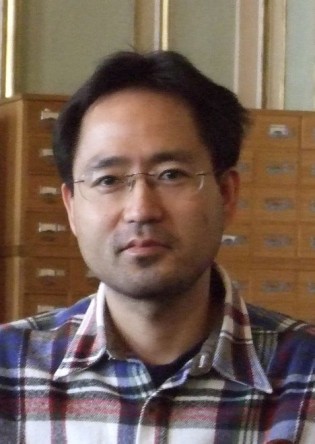Details
October 24, 2019
3:00 pm - 5:00 pm
Jackman Humanities Building, Rm 317
170 St George St
University of Toronto/McMaster University
YEHAN NUMATA BUDDHIST STUDIES PROGRAM 2019-20
HIROTOSHI OGIHARA (Kyoto University)
READING GROUP: “The Transmission of Buddhist Texts to Tocharian Buddhism”
THURSDAY, October 24, 2019, 3-5pm, University of Toronto, JHB 317
LECTURE: Buddhist Scripture Belonging to the (Mūla-)Sarvāstivādins Transmitted to Kuchean Buddhism
FRIDAY, October 25, 2019, 4-6pm, McMaster, University Hall 122
Written records by the pilgrims who traveled to India report that two different streams of Buddhism prevailed in the Tarim basin: Mahāyāna Buddhism in Khotan in the southern rim and the (Mūla-)Sarvāstivādins from Tumshuq to Turfan in the Northern rim, mainly in Kucha and Shorchuk. As discussed in my doctoral dissertation and some of my articles, the Vinaya texts in Tocharian languages accord well to those assigned to this Buddhist school, despite variable deviations. The term Tripiṭaka indicates that the Buddhist canon is generally divided into three parts: the Āgama, the Vinaya, and the Abhidharma. However, in this classification, one can observe discrepancies between Buddhist schools. In addition, different classifications of the canon existed even within the (Mūla-)Sarvāstivādin school. Sanskrit and Tocharian manuscript remains discovered by the expeditions and archaeologists are composed of manuscript fragments, and only the titles and structures of some Buddhist texts can be restored. Toch.B tarya piṭakänta ‘three Piṭakas’ and Toch.B sūträ winai abhidhārm “the Sūtra, the Vinaya, and the Abhidharma’ do not confirm that they had adopted the classification composed of three groups, because they may have been used as generic terms indicating the Buddhist canon, or they could have been borrowed from the Indic languages. Besides, no written records inform us about how the canon was classified in Kuchean Buddhism. In other words, it remains unknown which type of canon classification system Kuchean Buddhism used. In this lecture, I will discuss canon classification transmitted to Kuchean Buddhism, mainly based on Tocharian and Sanskrit manuscript fragments unearthed in this region.
 OGIHARA Hirotoshi is Program-Specific Associate Professor at Kyoto University. With his doctoral dissertation entitled Researches about Vinaya-texts in Tocharian A and B, he received his Ph.D. in Oriental Languages, Civilizations and Societies from École Pratique des Hautes Études, Paris in 2010. During his four years stay in Beijing up to 2015, he lectured Tocharian, Middle Persian, historical linguistics, and the history of Buddhism at Renmin University of China as her lecturer. His research mainly concerns the philological study on Buddhist manuscript remains written in Tocharian and Middle Iranian languages.
OGIHARA Hirotoshi is Program-Specific Associate Professor at Kyoto University. With his doctoral dissertation entitled Researches about Vinaya-texts in Tocharian A and B, he received his Ph.D. in Oriental Languages, Civilizations and Societies from École Pratique des Hautes Études, Paris in 2010. During his four years stay in Beijing up to 2015, he lectured Tocharian, Middle Persian, historical linguistics, and the history of Buddhism at Renmin University of China as her lecturer. His research mainly concerns the philological study on Buddhist manuscript remains written in Tocharian and Middle Iranian languages.
Event poster as pdf to download

